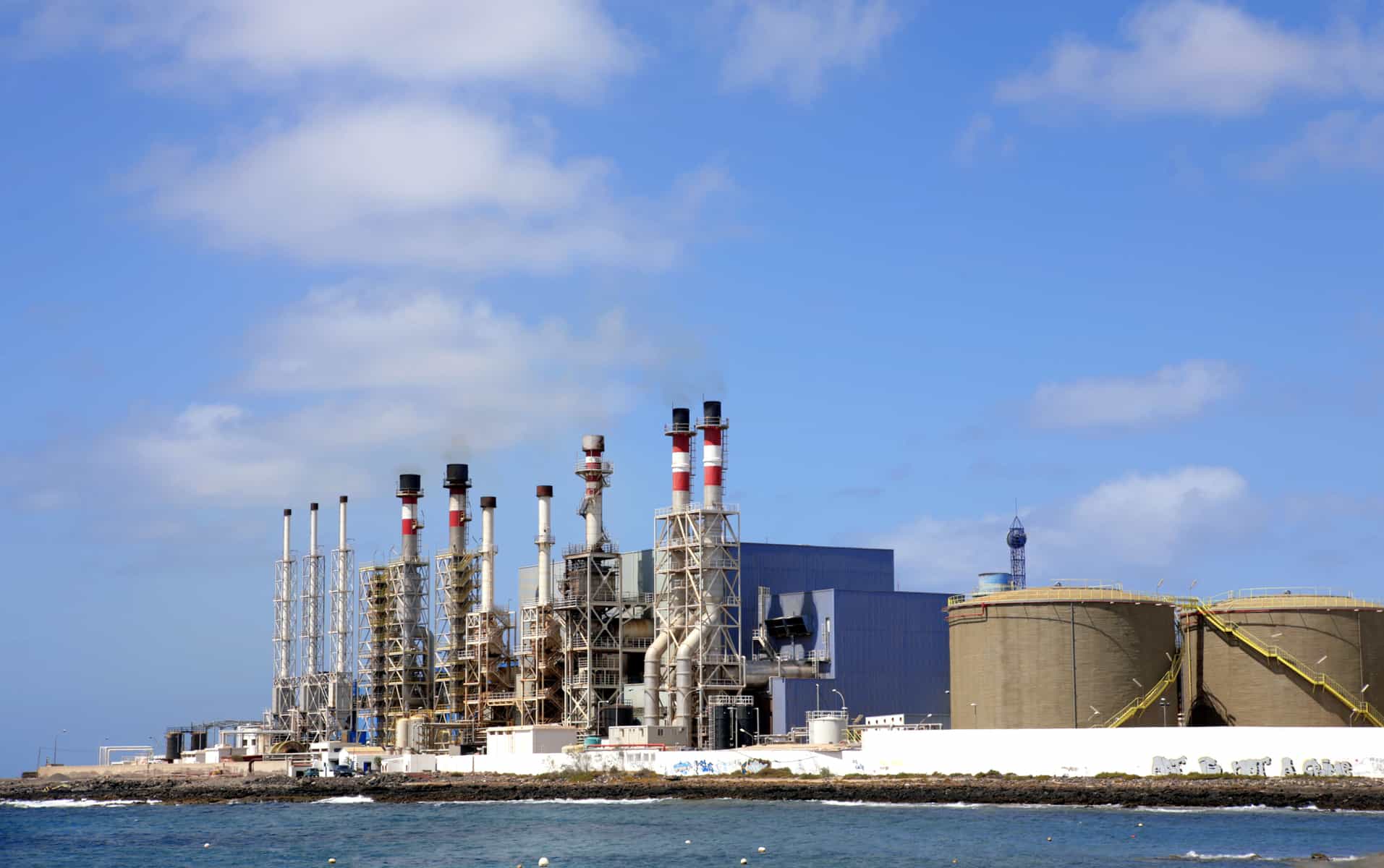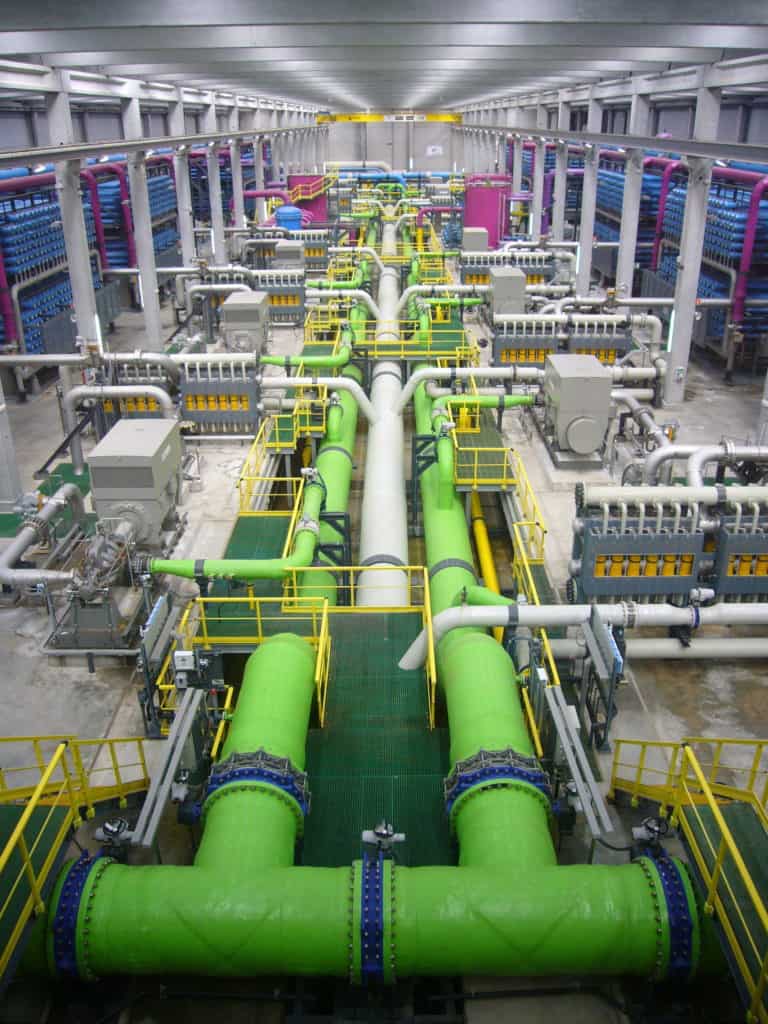
There are over 1,300 power plants in the United States, about a thousand of which report their water use data to the U.S. government.1Melissa Harris, “Alternative Water Use” (presentation, Third Energy-Water Nexus Partnership Meeting, U.S. Geological Survey, Washington, DC, November 29, 2012). Of those, about 10% use either brackish or saline water for cooling. In total, 49 use brackish water (6 from aquifers, 43 from surface sources), and 47 use saline (2 from groundwater, 43 from surface water, and 2 from other sources or plant discharge). Most of these are coastal power plants that withdraw seawater. Seawater is cooler and more abundant than surface water, both of which are advantages. Groundwater sources include brackish and saline aquifers, though it is unclear whether any water is being returned to the aquifers by the power plants. Some power plants near coal mines in Pennsylvania and West Virginia use mine pool water from underground coal mines.2J.A. Veil, Use of Reclaimed Water for Power Plant Cooling, (Argonne, Illinois: Argonne National Laboratory for the U.S. Department of Energy National Energy Technology Lab, 2007) Technical Report ANL/EVS/R-07/3.
While abundant and less controversial than freshwater withdrawals, brackish and saline water are more corrosive than freshwater. Plants employing water sources with higher salinity require better design and more expensive materials. Some facilities demineralize water on intake, producing salts that require disposal. Also, coastal saline water is part of an ecosystem, so impingement, entrainment, and biofouling are important to monitor and avoid.

Desalination remains an option for drinking water, though it is expensive and energy intensive. Better engineering designs and advanced technologies can overcome these problems. An integrated design for efficient thermal desalination uses the waste heat from power plants to preheat saline water, saving energy. Integrating power plants with desalination can offer multiple benefits. For example, wind and solar help desalination mitigate its carbon footprint. Variability of renewable energy sources remains a major challenge for grid operators. However, wind sources and solar can be matched with a flexible load such as desalination, thereby mitigating grid impacts of variable supply. Water treatment and storage can be ramped up and down, so facilities can treat more or less water to match the availability of wind. In areas where wind and solar resources coexist with large volumes of shallow and mildly brackish groundwater, an integrated system has the potential to improve the supply of water and electricity and is potentially more profitable than a standalone power plant.3M.E. Clayton, A.S. Stillwell, and M.E. Webber, “Implementation of brackish groundwater desalination using wind-generated electricity: A case study of the energy-water nexus in Texas,” Sustainability (special issue The Energy Sustainability Nexus) 6 (2014), 758–778. Despite the large construction costs, the flexibility of an integrated system can make money by allowing the producers to sell either water or electricity.
Because groundwater is typically cooler than surface conditions in warmer climates, it could be used to cool solar panels, which improves their efficiency. In the process of cooling the solar panels, the brackish water is heated, which improves its membrane throughput and recovery during the desalination process. It is a win-win scenario, with both water and electricity being produced with higher efficiency.4M.E. Clayton, J.B. Kjellsson, and M.E. Webber, “Wind-Solar-Desalination: How Integrated Systems Can Solve Our Water and Energy Issues,” Earth Magazine, November 2014.
In addition to wind and solar providing electricity, they can also provide direct inputs to drive the process. Windmills, instead of generating electricity, could provide direct mechanical power to operate the pumps that push the brackish water through membranes. And, solar systems, instead of generating electricity, could generate the heat that is used to boil the brackish water.
Image Credits: irabel8/Shutterstock.com; James Grellier/CC BY-SA 3.0.
Update your browser to view this website correctly.Update my browser now